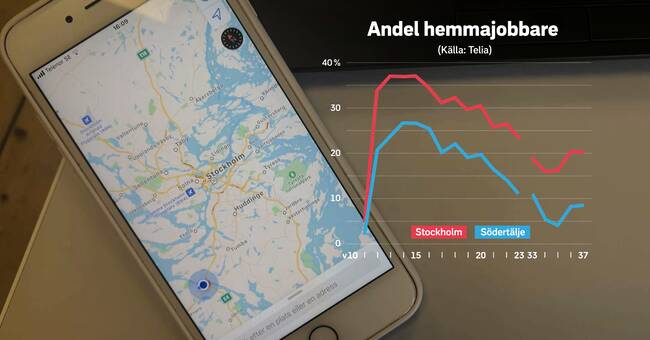From week ten when the corona recommendations were introduced until the beginning of April, the proportion who started working from home was around 40 per cent in Stockholm and around 30 per cent in Södertälje.
Since then, more people have begun to return to their usual movement patterns from and to work.
Now during the autumn, around 20 percent in Stockholm and 10 percent in Södertälje have not returned to their jobs.
But the numbers are only a clue, because it is based on anonymized data from our mobile phones, it is difficult to know exactly.
Differences between Södertälje and Stockholm
What is interesting is that the trend is the same for Södertälje and Stockholm, but the levels differ.
It is clear that more people worked from home in Stockholm's inner city compared to Södertälje.
Is this the closest we will measure movement from and to work?
- Yes, it is not possible to go deeper than this because what we analyze are anonymised and aggregated travel patterns.
But it still gives a general picture of our movement patterns, says Kristofer Ågren, head of analysis at Telia.

